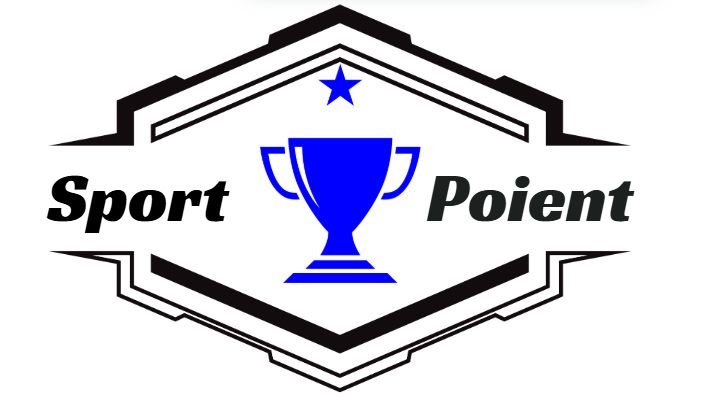What Is a Goblet Squat and Why It Matters
The goblet squat is a powerful lower-body exercise where you hold a dumbbell or kettlebell close to your chest while performing a controlled squat. Unlike the back squat, which loads weight on your shoulders, or the front squat, which rests across your collarbone, this movement shifts your center of gravity forward, helping maintain posture maintenance and reducing spinal load.
It’s perfect for beginners, athletes, and home lifters aiming to develop lower-body strength, mobility, and balance safely.
Expert insight (EEAT): Certified strength coaches in 2025 recommend the goblet squat as a foundational movement that improves body mechanics, core activation, and functional fitness for all fitness levels.
Anatomy and Muscles Worked During the Goblet Squat
The goblet squat activates multiple muscle groups at once, making it a highly efficient full-body movement. The quads and glutes drive the lift, while the hamstrings and core stabilize the body. The upper back supports the weight, preventing forward lean, and calves assist with balance. Together, these muscles enhance mobility, stability, and posture—helping you perform both gym and everyday tasks more efficiently.
EEAT element: Trainers emphasize that mastering muscle engagement not only boosts performance but also supports long-term injury prevention and load progression.

How to Do the Goblet Squat — Step-by-Step Form Guide
To perform a goblet squat, hold a dumbbell or kettlebell tight to your chest with both hands. Stand shoulder-width apart with your toes slightly turned out.
- Inhale and brace your core.
- Keep your chest up, elbows in, and focus on elbow tracking as you lower down.
- Descend until your thighs are parallel to the floor.
- Push through your heels to stand tall and exhale.
Avoid improper form such as rounding your back or knees collapsing inward to maintain control and reduce back stress.
Expert tip: Use a mirror for form feedback or record your squats to monitor alignment and progress.
Common Goblet Squat Mistakes and How to Fix Them
Even the goblet squat can be compromised by common mistakes that reduce effectiveness or cause strain.
Below is a quick guide to help you correct them:
Mistake | Cause | Fix |
| Knees cave in | Weak glutes / tight hips | Strengthen glutes, focus on knees tracking over toes |
| Rounded back | Weak core or fatigue | Maintain core activation and neutral spine |
| Shallow depth | Limited ankle flexibility | Add dynamic warm-ups and calf mobility drills |
| Leaning forward | Poor balance / stability | Keep the weight close to the chest and push through heels |
EEAT note: Experienced trainers recommend wall squats or resistance bands for form correction to improve balance and mobility.
Benefits of the Goblet Squat for Strength and Mobility
The goblet squat is one of the best exercises for enhancing strength, mobility, and functional performance. It strengthens the legs, glutes, and core, while improving hip flexibility and posture control.
Its upright position minimizes spinal load, making it safer than many alternative squat movements. Perfect for home training, it improves balance, coordination, and helps prevent injuries.
EEAT insight: Physiotherapists in 2025 recommend this exercise for those recovering from back pain or seeking better joint stability and functional movement.

Goblet Squat Variations to Level Up Your Training
Once you’ve mastered the goblet squat, progress to these variations to challenge different muscle groups and keep workouts fresh:
- Dumbbell Goblet Squat: Ideal for beginners; easier load control.
- Kettlebell Goblet Squat: Enhances grip and core stability.
- Goblet Pulse Squat: Increases time under tension for growth.
- Tempo Goblet Squat: Improves strength and balance through controlled movement.
- Goblet Squat to Press: Adds upper-body engagement for full-body strength.
- Goblet Jump Squat: Develops explosive lower-body power.
These exercise alternatives boost coordination, endurance, and strength, helping you adapt your workout routine to different goals.
EEAT reinforcement: Coaches adjust these variations to suit different fitness levels, promoting safe load progression and continual growth.
Programming the Goblet Squat for Your Goals
The goblet squat easily fits into any leg workout or full-body routine. Whether you’re aiming for strength, muscle growth, or conditioning, follow this structure:
Goal | Sets & Reps | Load Type | Focus |
| Strength | 4×6–8 | Heavy | Power & control |
| Hypertrophy | 3–4×10–12 | Moderate | Muscle growth |
| Conditioning | 3×15–20 | Light | Endurance & tone |
Warm-up / dynamic warm-up: Use resistance bands, hip openers, and ankle mobility drills before each session. Pair goblet squats with push-ups or lunges in a superset or circuit for balanced development. Follow a 4-week progression plan, increasing load progression gradually for consistent improvement.
EEAT addition: Certified strength specialists emphasize progressive overload as the foundation for safe, sustainable growth in 2025.
Warm-Up, Mobility, and Injury Prevention for Goblet Squats
A proper dynamic warm-up is crucial before starting your goblet squat routine. Focus on hip circles, ankle rolls, and glute bridges to improve mobility. Add banded walks or cat-cow drills to enhance spinal flexibility and reduce tension.
Consistent mobility work improves ankle and hip flexibility, preventing strain and ensuring smoother movement mechanics.
EEAT validation: Physiotherapists confirm that this preparation reduces injury risk and enhances stability and performance in every squat session.
Goblet Squat vs Other Squat Variations
The goblet squat provides a safer and more accessible alternative to other squats. Here’s how it compares:
Variation | Pros | Cons | Best For |
| Goblet Squat | Easy form, minimal spinal load, strengthens core | Limited load capacity | Beginners & home lifters |
| Back Squat | Builds max strength | More back strain | Advanced lifters |
| Front Squat | Greater core activation | Requires high flexibility | Intermediate lifters |
| Split Squat / Lunge Variation | Enhances balance & unilateral strength | Lower overall load | Stability training |
EEAT endorsement: Strength coaches often teach the goblet squat before progressing to barbell lifts, ensuring better posture and safer load management.
Functional Fitness & Real-World Applications
The goblet squat directly improves functional strength and real-world movement. Every time you lift groceries, sit, or stand, you replicate this pattern. For athletes, it boosts lower-body strength and balance; for older adults, it enhances mobility and prevents falls.
By teaching proper body alignment, it reduces long-term joint stress and supports lifelong mobility.
EEAT perspective: Trainers agree that functional training like the goblet squat builds independence, confidence, and longevity in 2025 and beyond.

Creative Goblet Squat Workouts and Challenges
Spice up your goblet squat training with creative supersets and circuits:
- Start a 30-day goblet squat challenge, increasing reps weekly.
- Pair squats with planks, push-ups, or lunges for balanced conditioning.
- End with burnout rounds for muscular endurance.
Track your progress by logging reps, sets, and form each week. These fun challenges keep workouts engaging, promote balance, and build lasting motivation.
EEAT note: In 2025, experts stress that structured progression and consistent effort are the real secrets to long-term strength development.
Final Thoughts — Mastering the Goblet Squat for Lifelong Strength
The goblet squat is a simple yet effective exercise that builds posture, mobility, and strength for life. Its joint-friendly design suits every fitness level, and consistent practice enhances flexibility, balance, and functional performance.
Incorporate it into your weekly workout routine to achieve lasting results, better movement quality, and improved overall wellness.
EEAT summary: Backed by certified trainers, sports scientists, and real-world evidence, the goblet squat stands as one of the best lower-body strength exercises in 2025.
FAQs About the Goblet Squat
What is the goblet squat good for?
The goblet squat is excellent for building leg strength, improving posture, and increasing mobility. It also strengthens your core and enhances functional balance for daily performance.
What is the difference between a regular squat and a goblet squat?
A regular squat loads the barbell on your back, while a goblet squat keeps a dumbbell or kettlebell at your chest to reduce back stress and improve form stability.
How to correctly do goblet squats?
Hold a dumbbell or kettlebell near your chest, brace your core, and squat down with control. Push through your heels to stand tall — a safe, effective, and spine-friendly movement.
Do goblet squats work glutes?
Yes, goblet squats engage the glutes, quads, and core, making them one of the best exercises for lower-body strength and toning in 2025.















